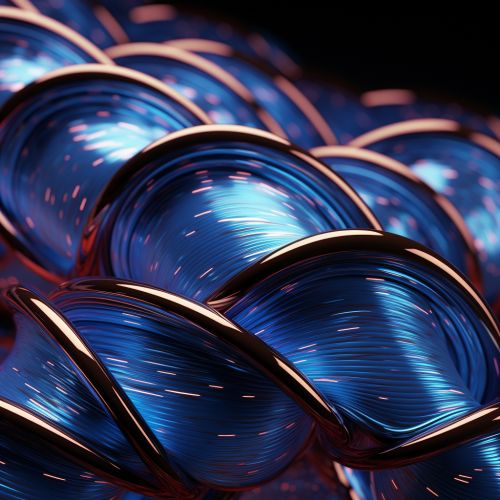Topological Insulators
Introduction
Topological insulators are a unique class of materials that have garnered significant attention in the field of condensed matter physics. These materials exhibit unusual properties that are not found in other types of materials, making them a subject of intense research and study. Topological insulators are characterized by their insulating behavior in the bulk and conducting behavior on the surface, a phenomenon that arises due to their unique band structure and the principles of quantum mechanics.
Classification
Topological insulators can be classified into two main types: two-dimensional (2D) and three-dimensional (3D) topological insulators. The classification is based on the dimensionality of the conducting surface states.
Two-Dimensional Topological Insulators
Two-dimensional topological insulators, also known as quantum spin Hall insulators, are materials that exhibit edge states that are immune to backscattering and are thus topologically protected. This means that the edge states are robust against local perturbations, such as impurities or defects in the material.
Three-Dimensional Topological Insulators
Three-dimensional topological insulators, on the other hand, have conducting surface states that form a two-dimensional electron gas on the surface of the material. These surface states are characterized by a linear dispersion relation, similar to that of graphene.


Physical Properties
Topological insulators are characterized by a number of unique physical properties that set them apart from other materials. These properties arise from the topological nature of the electronic states in these materials.
Bulk Insulating Behavior
The bulk of a topological insulator is insulating due to a large band gap. This band gap arises from strong spin-orbit coupling, a quantum mechanical effect that couples an electron's spin to its orbital motion.
Surface Conducting Behavior
The surface of a topological insulator is conducting due to the presence of topologically protected surface states. These states arise due to the non-trivial topology of the bulk band structure, and they span the band gap of the material.
Topological Protection
The surface states of a topological insulator are topologically protected, meaning they are robust against local perturbations. This property arises from the principle of time-reversal symmetry, which ensures that the surface states remain conducting even in the presence of impurities or defects.
Applications
Due to their unique properties, topological insulators have potential applications in a variety of fields, including electronics, spintronics, and quantum computing. The topologically protected surface states, in particular, could be used to create devices with low power consumption and high speed.
Electronics
In the field of electronics, topological insulators could be used to create transistors that operate at higher speeds and lower power consumption than conventional transistors. This is due to the fact that the surface states of a topological insulator are immune to backscattering, which can cause energy loss in conventional transistors.
Spintronics
In spintronics, topological insulators could be used to create devices that utilize the spin of an electron, rather than its charge, to carry information. The strong spin-orbit coupling in topological insulators could be used to create spin-polarized currents, which are essential for the operation of spintronic devices.
Quantum Computing
In quantum computing, topological insulators could be used to create qubits, the basic units of information in a quantum computer. The topologically protected surface states could be used to create qubits that are robust against decoherence, a major challenge in the field of quantum computing.
